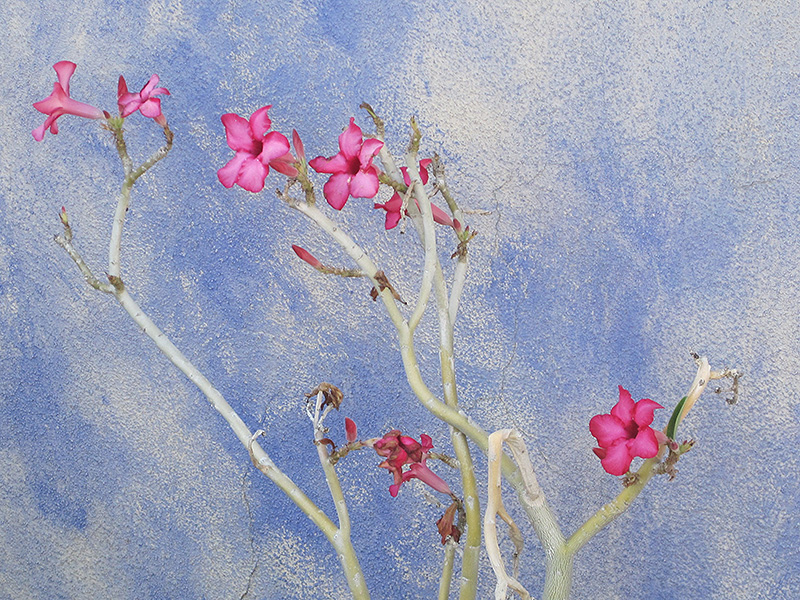|
|
|
| home | about us | loyalty program | products | directions | warranty | garden splendor ® | plant collector | landscaping | |
| Plant Finder | |
|
* This is a "special order" plant - contact store for details Height: 6 feet Spread: 4 feet
Sunlight:
Hardiness Zone: 10b Other Names: Mock Azalea, Impala Lily, Sabi Star Description: A striking succulent plant with interesting swollen stems and highly attractive blooms; will be deciduous during drought or cooler weather; best grown in containers that can be moved indoors during winter; sap is highly toxic, avoid contact Ornamental Features Desert Rose features showy clusters of red trumpet-shaped flowers with pink overtones and white centers at the ends of the branches from early spring to early summer. It has green evergreen foliage. The glossy narrow leaves remain green throughout the winter. The smooth gray bark and brown branches are extremely showy and add significant winter interest. Landscape Attributes Desert Rose is a multi-stemmed evergreen shrub with an upright spreading habit of growth. Its average texture blends into the landscape, but can be balanced by one or two finer or coarser trees or shrubs for an effective composition. This is a relatively low maintenance shrub, and should only be pruned after flowering to avoid removing any of the current season's flowers. Gardeners should be aware of the following characteristic(s) that may warrant special consideration;
Desert Rose is recommended for the following landscape applications;
Planting & Growing Desert Rose will grow to be about 6 feet tall at maturity, with a spread of 4 feet. It has a low canopy with a typical clearance of 1 foot from the ground, and is suitable for planting under power lines. It grows at a slow rate, and under ideal conditions can be expected to live for 40 years or more. This shrub does best in full sun to partial shade. It prefers dry to average moisture levels with very well-drained soil, and will often die in standing water. It is not particular as to soil pH, but grows best in sandy soils. It is somewhat tolerant of urban pollution. This species is not originally from North America, and parts of it are known to be toxic to humans and animals, so care should be exercised in planting it around children and pets.. Desert Rose makes a fine choice for the outdoor landscape, but it is also well-suited for use in outdoor pots and containers. With its upright habit of growth, it is best suited for use as a 'thriller' in the 'spiller-thriller-filler' container combination; plant it near the center of the pot, surrounded by smaller plants and those that spill over the edges. It is even sizeable enough that it can be grown alone in a suitable container. Note that when grown in a container, it may not perform exactly as indicated on the tag - this is to be expected. Also note that when growing plants in outdoor containers and baskets, they may require more frequent waterings than they would in the yard or garden. This is a tender plant that may require additional winter protection in our area; contact the store for more information.
* This is a "special order" plant - contact store for details Characteristics
Applications
Features & Attributes
|
|


